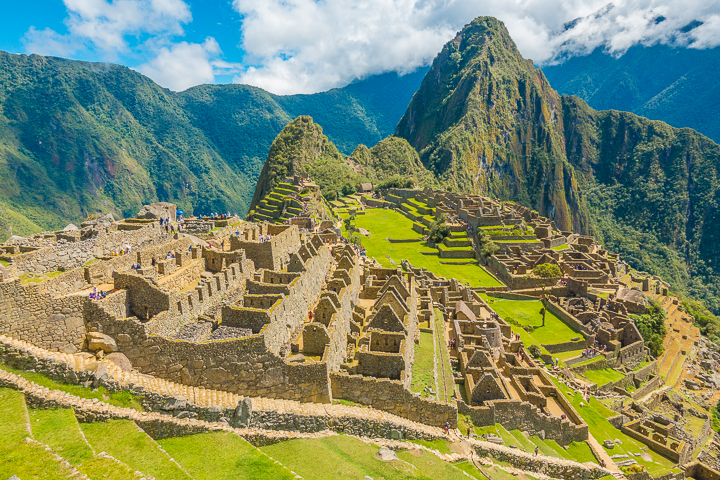The Inca Empire, meaning "four parts together" was also known as the Inka Empire. It was the largest empire in pre-Columbian America, greater than even the Aztec or Mayan empires. The administrative, political and military center of the empire was in the city of Cusco. The Inca civilization arose from the Peruvian highlands sometime in the early 13th century. Its last stronghold was conquered by the Spanish in 1572. From 1438 to 1533, the Incas incorporated a large portion of western South America, centered on the Andean Mountains, using conquest and peaceful assimilation, among other methods. At its largest, the empire joined Peru, western Ecuador, western and south central Bolivia, northwest Argentina, a large portion of what is today Chile, and the southwesternmost tip of Colombia into a state comparable to the historical empires of Eurasia. Its official language was Quechua. Many local forms of worship persisted in the empire, most of them concerning local sacred Huacas, but the Inca leadership encouraged the sun worship of Inti – their sun god – and imposed its sovereignty above other cults such as that of Pachamama. The Incas considered their king, the Sapa Inca, to be the "son of the sun."
The Inca people were a pastoral tribe in the Cusco area around the 12th century. Peruvian oral history tells an origin story of three caves. The center cave at Tampu T'uqu (Tambo Tocco) was named Qhapaq T'uqu ("principal niche", also spelled Capac Tocco). The other caves were Maras T'uqu (Maras Tocco) and Sutiq T'uqu (Sutic Tocco). Four brothers and four sisters stepped out of the middle cave. They were: Ayar Manco, Ayar Cachi, Ayar Awqa (Ayar Auca) and Ayar Uchu; and Mama Ocllo, Mama Raua, Mama Huaco and Mama Qura (Mama Cora). Out of the side caves came the people who were to be the ancestors of all the Inca clans. Ayar Manco carried a magic staff made of the finest gold. Where this staff landed, the people would live. They traveled for a long time. On the way, Ayar Cachi boasted about his strength and power. His siblings tricked him into returning to the cave to get a sacred llama. When he went into the cave, they trapped him inside to get rid of him. Ayar Uchu decided to stay on the top of the cave to look over the Inca people. The minute he proclaimed that, he turned to stone. They built a shrine around the stone and it became a sacred object. Ayar Auca grew tired of all this and decided to travel alone. Only Ayar Manco and his four sisters remained.
